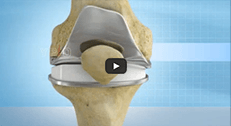Wrist
Normal Hand Anatomy
The hand in the human body is made up of the wrist, palm, and fingers. The most flexible part of the human skeleton, the hand enables us to perform many of our daily activities. When our hand and wrist are not functioning properly, daily activities such as driving a car, bathing, and cooking can become impossible.
For more information about "Normal Hand Anatomy" click on below tabs.
Trigger Finger
The ability to bend the fingers is governed by supportive tendons that connect muscles to the bones of the fingers. The tendons run along the length of the bone and are kept in place at intervals by tunnels of ligaments called pulleys. When the fingers bend, or are straightened, a slippery coating called tenosynovium helps the tendons smoothly glide through the ligaments with reduced friction.
For more information about "Trigger Finger" click on below tabs.
Dupuytren’s Contracture
Dupuytren’s Contracture is a hand condition where thickening of the underlying fibrous tissues of the palm cause the fingers to bend inward. Patients with this condition are unable to fully straighten the affected fingers.
For more information about "Dupuytren’s Contracture" click on below tabs.
De Quervain’s Tenosynovitis
The muscles and bones of the hand are connected by thick flexible tissue called tendons. Tendons are covered by a thin soft sheath of tissue known as synovium. Extensor pollicis brevis and abductor pollicis longus are two tendons located on the thumb side of the wrist. Inflammation and swelling of the tendon sheaths puts pressure on the adjacent nerves and leads to pain and numbness in the thumb side of the wrist.
For more information about "De Quervain’s Tenosynovitis" click on below tabs.
Carpal Tunnel Syndrome
Carpal Tunnel Syndrome is a common, painful, progressive condition that is caused by compression of the median nerve at the wrist area.Common symptoms of carpal tunnel syndrome include numbness and tingling sensation in all the fingers except little finger; pain and burning sensation in hand and wrist that may radiate up the arm and elbow; and weakness in hand with diminished grip strength.
For more information about "Carpal Tunnel Syndrome" click on below tab.
Scaphoid Fractures
The scaphoid bone is a small, boat-shaped bone in the wrist, which, along with 7 other bones, forms the wrist joint. It is present on the thumb side of the wrist causing it to be at a high risk for fractures. A scaphoid fracture is usually seen in young men aged 20 to 30 years. They can occur at two places: near the thumb or near the forearm.
For more information about "Scaphoid Fractures" click on below tabs.
Ganglion Cysts
Ganglion cysts are fluid-filled lumps that most commonly develop along the tendons or joints of wrists or hands. It looks like a water balloon on a stalk and contains a clear fluid or gelatinous material. Ganglion cysts are noncancerous, generally harmless and disappear without any treatment. However, if the cyst becomes painful or interferes with hand movement, they can be treated non-surgically or removed surgically.
For more information about "Ganglion Cysts" click on below tabs.
Wrist Fracture
The wrist is comprised of two bones in the forearm, the radius and ulna, and eight tiny carpal bones in the palm. The bones meet to form multiple large and small joints. A wrist fracture refers to a break in one or more of these bones.
For more information about "Wrist Fracture" click on below tabs.





